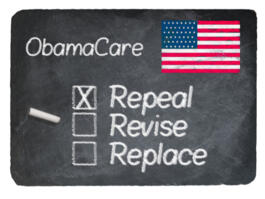Health Care Reform Must Start Now
A Commentary By Froma Harrop
This would seem a heckuva time to unfurl a national health plan. Washington has big fires to put out in the financial markets. Taxpayers, meanwhile, face a zillion-dollar bill for economic stabilization on top of already soaring deficits. Can we afford a big new government program right now?
We have no choice. Health care is part and parcel of the economic crisis. Costing $2.4 trillion this year, our chaotic system drains the economy of resources that could go elsewhere. It straps ankle weights onto American businesses competing with foreign rivals whose governments have contained health-care spending.
The bright side is that comprehensive health-care reform could save Americans major money in the long run. You can't say "comprehensive" too many times. The goal isn't just finding more dollars to cover America's 46 million uninsured. Reformers must venture deep into the machinery of the health-care megalopolis and change a slew of perverse incentives that drive up medical costs.
We're not talking about the easy things, such as computerizing medical records or better managing chronic illnesses. Even covering the uninsured is simple to fix, according to Alan Sager, a health policy expert at the Boston University School of Public Health.
The mission must be to end the enormous waste, which, Sager says, accounts for half of all health-care spending. Waste comes in numerous guises -- paperwork battles, unnecessary care, too many medical specialists, high-priced brand-name drugs and defensive medicine to fend off lawyers, to name a few. The system engenders complexity and mistrust, which provides work for numerous lawyers, accountants, consultants and programmers, none of whom cure patients.
Changing the patterns of delivering care, however, will threaten many livelihoods. That's what has stopped reforms in the past. Politicians and the public must gird their loins for battle. This time, the war must be won.
Happily, the dollars are already there to cover everyone and deliver high-quality care. We spend $8,000 a year per American on health care, double the average of wealthy countries. (And our $8,000 average includes millions of people with no insurance who see no doctors.)
What would the reforms look like? Sager suggests that state regulators and the federal government offer waivers to public and private payers to try new approaches. Start with the doctors. There are too many specialists and not enough family doctors. Specialists deliver expensive medicine.
How about an experiment where primary-care doctors are paid $250,000 a year but work under a capitation system? Put in plain English, the doctors would treat a set number of patients at a fixed yearly cost, adjusted for medical risks. A separate watertight budget could be set aside for care that the doctors authorize, such as pills, CT scans or surgery.
Under this setup, primary care doctors would make much more money than they do now. This would draw more medical students into primary care. And because they would not earn more for giving more treatments, the doctors would be less tempted to offer unnecessary care.
In fee-for-service medicine, by contrast, the incentive is to provide more service. Marry fee-for-service to the fear of being sued, and you create a gushing outflow of health-care dollars. "It's like the Missouri and Mississippi coming together at St. Louis," Sager says.
The point of health-care reform must not be to secure more money for more business as usual. With the ranks of the uninsured swelling -- and those who still have coverage holding onto it with both hands -- public support for deep reforms has never been stronger. An economic meltdown provides a fine opportunity to shelve ideologies and enact practical solutions to the health-care crisis. Now is precisely the time to strike.
COPYRIGHT 2008 THE PROVIDENCE JOURNAL CO.
DISTRIBUTED BY CREATORS SYNDICATE, INC.
Views expressed in this column are those of the author, not those of Rasmussen Reports.
See Other Political Commentary.
See Other Commentaries by Froma Harrop.
Rasmussen Reports is a media company specializing in the collection, publication and distribution of public opinion information.
We conduct public opinion polls on a variety of topics to inform our audience on events in the news and other topics of interest. To ensure editorial control and independence, we pay for the polls ourselves and generate revenue through the sale of subscriptions, sponsorships, and advertising. Nightly polling on politics, business and lifestyle topics provides the content to update the Rasmussen Reports web site many times each day. If it's in the news, it's in our polls. Additionally, the data drives a daily update newsletter and various media outlets across the country.
Some information, including the Rasmussen Reports daily Presidential Tracking Poll and commentaries are available for free to the general public. Subscriptions are available for $4.95 a month or 34.95 a year that provide subscribers with exclusive access to more than 20 stories per week on upcoming elections, consumer confidence, and issues that affect us all. For those who are really into the numbers, Platinum Members can review demographic crosstabs and a full history of our data.
To learn more about our methodology, click here.



